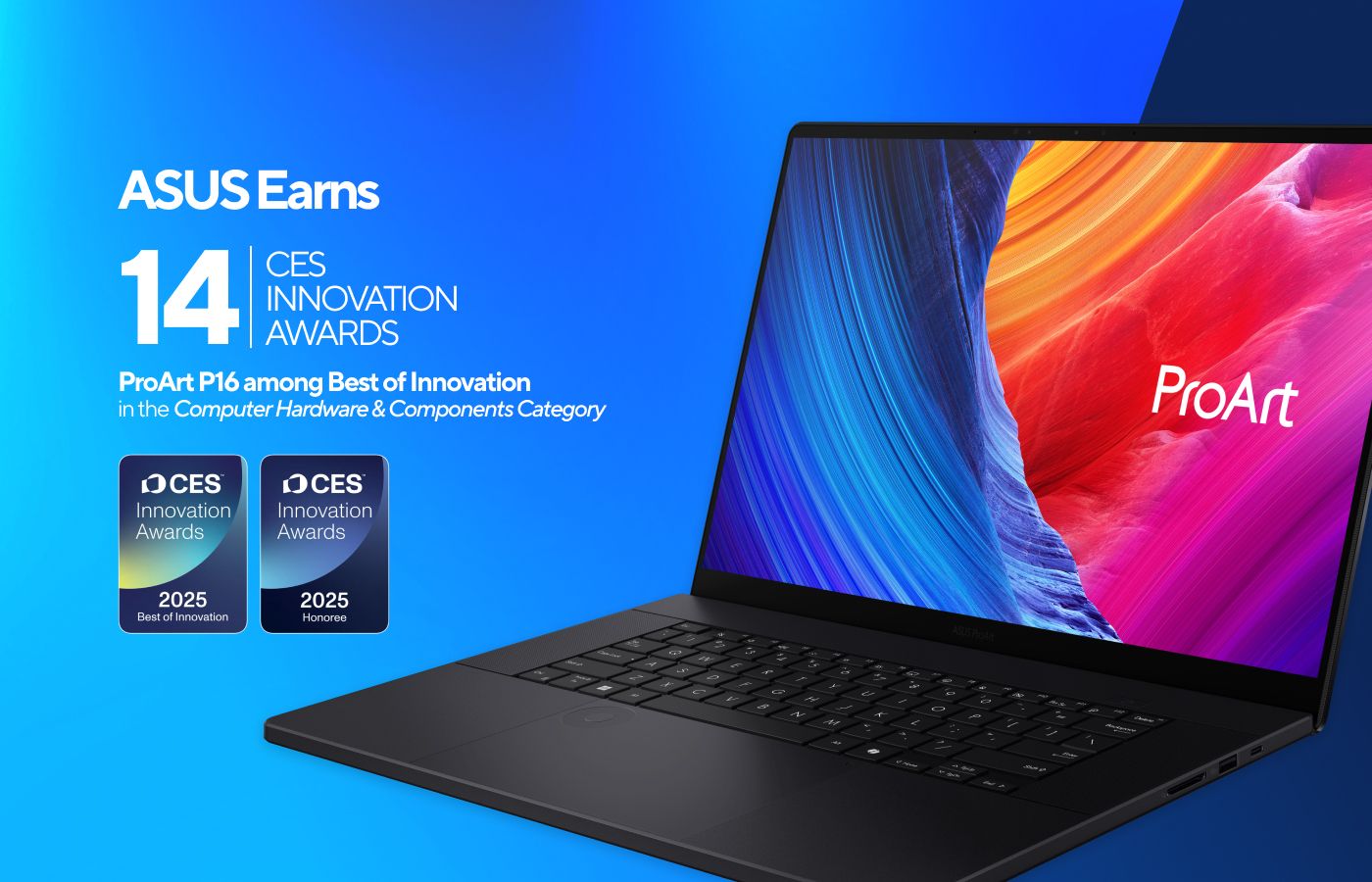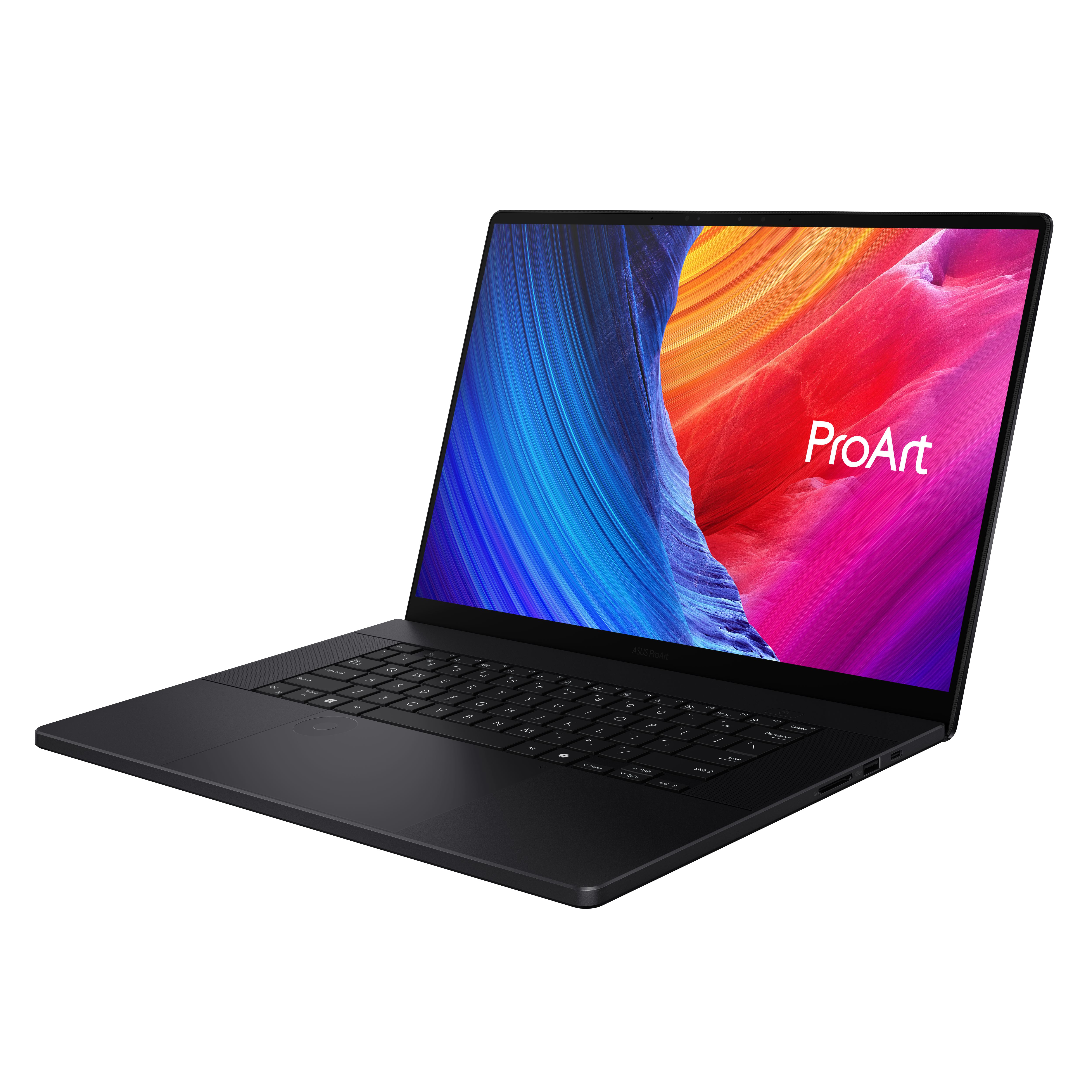Review: ASUS ProArt P16 (2025, RTX 5090 Edition) — The Best Creator Laptop of 2025?
Overview
In a world where creator-laptops must juggle weight, battery life, I/O, performance and screen quality, the ProArt P16 makes a bold claim: that you can bring workstation-class power in a ~2 kg chassis. The 2025 “RTX 5090” edition – featuring a ASUS Lumina Pro 4K / 120 Hz OLED display + NVIDIA GeForce RTX 5090 Laptop GPU + AMD Ryzen AI 9 HX 370 – is pitched as their “flagship creator mobile workstation”. (GlobeNewswire)
Let’s dig deep into what makes this machine compelling for creators in 2025 — and where the compromises remain.



Key Specifications (flagship configuration)
-
Processor: AMD Ryzen AI 9 HX 370 (12-core/24-thread, with integrated XDNA NPU up to 50 TOPS) (Gizmochina)
-
GPU: NVIDIA GeForce RTX 5090 Laptop GPU (24 GB GDDR7 in this machine) (Trendy Gadget)
-
Display: 16″, 3840 × 2400 (4K-ish, 16:10) OLED, 120 Hz refresh, 0.2 ms response, HDR peak ~1,600 nits, 100% DCI-P3, Pantone-validated, Delta E < 1. (Gizmochina)
-
Memory/Storage: Up to 64 GB LPDDR5X, dual 2 TB PCIe 4.0 SSDs (i.e. 4 TB total) in top config. (tmcnet.com)
-
Weight / Chassis: ~1.95 kg (≈4.3 lbs), 0.59 in thin in some builds. Meets MIL-STD-810H durability standard. (GlobeNewswire)
-
I/O & features: USB4 (40 Gbps), USB-C, USB-A, HDMI 2.1, SD Express 7.0 card reader, WiFi 7, Bluetooth 5.4. Also features a “DialPad” for creatives, bundled Asus AI tools (StoryCube, MuseTree). (Gizmochina)
-
Cooling: Vapor chamber + liquid-metal thermal compound, redesigned for this edition to better maintain sustained loads. (ShiftDelete.Net Global)
What’s Outstanding (for Creators)
1. Display quality:
This is one of the best displays among laptops in 2025. With full DCI-P3, Pantone validation and very high luminance for HDR, plus 120 Hz refresh, it gives a fluid and color-accurate canvas. “Blacks are inky, highlights piercing… 0.2 ms response time.” (Superfashion.us) For color-grading, photo editing, 4K/8K video work, this is a huge plus.
2. Raw performance:
With the HX370 + RTX 5090 (albeit in a laptop form), you have top-tier GPU and CPU horsepower. One review reports 3DMark Time Spy GPU ≈ 18,400 – which is impressive for this class. (Superfashion.us) The high VRAM (24 GB) helps with heavy creator workflows (3D modelling, multi-layer 8K timelines). For creators, that means: less time waiting, smoother scrubbing and less compromise.
3. Portability + build quality:
Being ~2 kg and thin for what it offers is a win. For creators who move between studio, location and home, seeing workstation-level power in a mobile machine is admirable. Also good I/O for pro gear (card reader, HDMI 2.1, USB4 etc).
4. Creator-centric extras:
The DialPad (useful in apps like Adobe Premiere, After Effects), and AI tools like StoryCube and MuseTree are nice touches. ASUS is positioning this machine not just as a powerful laptop, but as a “creator mobile studio”. (Trendy Gadget)
Where the Trade-Offs and Warnings Are
1. Thermals & sustained performance:
Even with the updated cooling, the chassis is thin—and the RTX 5090 may be capped at ~120 W TGP in this build. One article mentions that gaming laptops with same GPU hit ~22–23 K in 3DMark vs ~18.4 K here, due to power/thermal constraints. (Superfashion.us) For long render runs, you may see throttling or elevated temperatures. In quiet studio environments this could be a concern.
2. Battery life:
High-end CPUs + top GPUs + 4K/120 Hz OLED display = power hungry. Some reports for earlier versions (~RTX 4070) show ~6-7 hours under moderate use. (Reddit) One should not expect all-day unplugged 8-10 hour battery life in heavy use.
3. Price and value:
The flagship config with RTX 5090, 64 GB RAM, 4 TB SSD will be very expensive (reported ~$3,999 in one article) for the premium. (The Verge) You’re paying for the absolute top tier of performance—lingering question: is it the best value versus slightly lower specs?
4. Some reliability / quality concerns:
While the 2025 edition seems well designed, earlier iterations and some user reports indicate issues:
“My ASUS Proart P16 … has broken down TWICE within 6 months … data wipe.” (Reddit)
“Mine will shut down out of nowhere … said it’s a ‘known issue without a solution’.” (Reddit)
These suggest you may want to check model revision, warranty, and user reports before committing.
5. Practicality of display in bright light/environments:
One reviewer noted: “While the peak HDR is ~1,600 nits, in real-world SDR brightness was closer to 500 nits.” (Superfashion.us) For outdoor bright sunlight work, the display might still struggle compared to high-brightness IPS LCDs designed for outdoor use.
Real-World Use Cases & Suitability
Ideal for:
-
Photo/video editors working on 4K/8K media who want color-accurate mobile setup.
-
3D artists needing high-end GPU (24 GB VRAM) on the go.
-
Content creators who value display quality + portability.
-
Professionals wanting a Windows alternative to premium mobile workstations (e.g., MacBook Pro class) but need Nvidia/Windows ecosystem.
Less ideal for:
-
Users who prioritize battery life above all else (expect shorter unplugged runtime).
-
Casual users or those on a tighter budget (many specs will be overkill).
-
Use cases requiring ultra-quiet/thin mobile usage with minimal cooling (under load you WILL hear fans).
-
Those who need maximum TGP for GPU (desktop equivalent performance) – this is still a mobile form factor, meaning compromises.
Verdict
If you are a serious creator in 2025 and want “studio-grade” performance in a portable laptop, the ASUS ProArt P16 (RTX 5090 edition) is among the best options available. The combination of a superb display, high-end GPU/CPU, generous I/O and creator-centric extras makes it very compelling.
However, it’s not perfect: you’ll give up some battery life, potentially some sustained-load headroom compared to a full desktop, and you’ll pay a premium for the top specs. Also remember to check for build quality/reliability feedback.
If I had to summarize: Yes – this could be “the best creator laptop of 2025” for many workflows. But no, it’s not the perfect fit for every creator. If you’re more moderate in your demands (e.g., editing 1080p/4K, lighter GPU load), you might save money with a slightly lower-tier model and still get excellent results.
If you like, I can compare the ProArt P16 to its major competitors (e.g., Dell XPS 16, Apple MacBook Pro 16, HP ZBook Studio) and dig into benchmark data & real-world creator app tests to help you decide whether the 5090 version is the one to go for. Would you like that?
